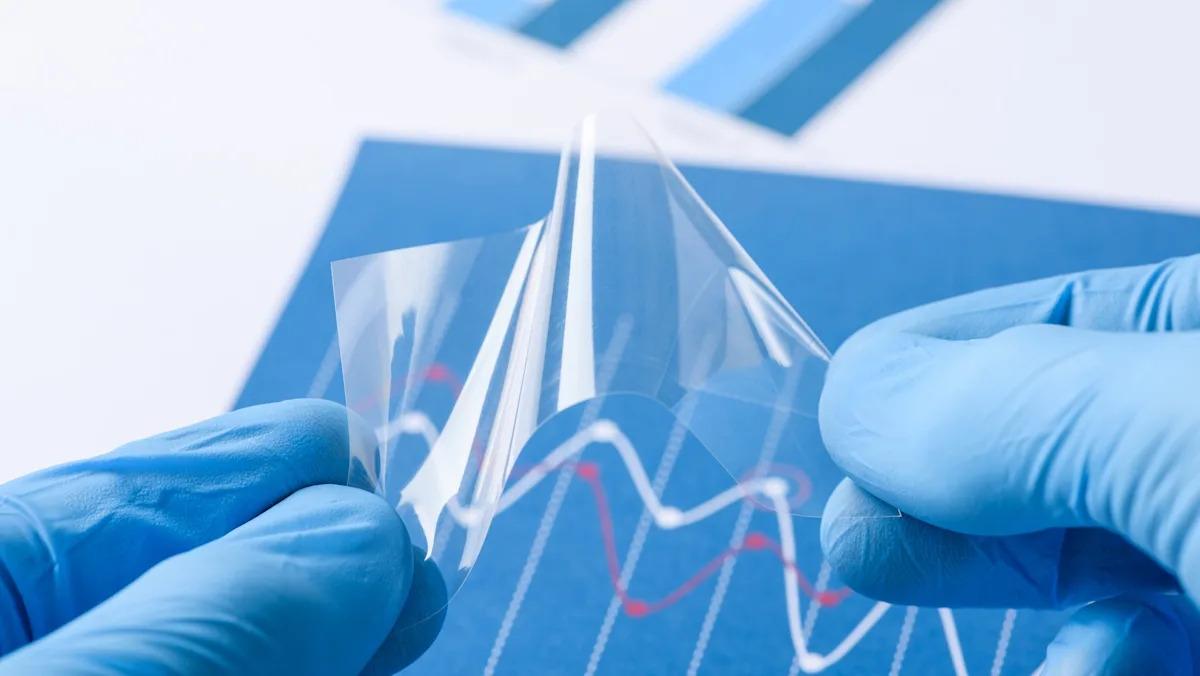Researchers at Niigata University in Japan have developed a transparent film that’s an exceptionally efficient and stable photoanode, which could aid in advancing solar-driven water splitting to create hydrogen.
A report shared by TechXplore stated that this transparent crystalline mesoporous tungsten trioxide (WO3) film has achieved a 93% oxygen evolution efficiency, while retaining 98% of its initial photocurrent after 30 hours of continuous operation in neutral conditions.
Its transparency enables its use in tandem photoelectrochemical devices, and the addition of finely dispersed cobalt oxide (CoOx) nanoparticles was key to achieving those remarkable efficiency and stability results.
“The high optical transparency and exceptional long-term stability under neutral pH conditions of the mesoporous WO₃ electrode provides a scalable strategy for tandem photoelectrochemical water splitting devices by using it as a front light-harvested layer, thereby advancing the prospects of sustainable solar-driven water splitting,” said corresponding author Dr. Masayuki Yagi in the university’s report.
Hydrogen’s role in the global clean energy transition is still a work in progress. There was a 2.5% increase in demand for this next-gen fuel from 2022 to 2023, but its consumption is concentrated in the refining and chemical sectors, where it’s primarily produced using dirty fuels.
Unlocking more of the potential for solar-to-hydrogen conversion through this new photoanode material could be a turning point for expanding hydrogen’s role in the clean energy transition, reducing both monetary and environmental costs.
It can be used as a static source to power buildings, reduce the carbon footprint of public transportation, including buses and trains, and even produce useful byproducts such as potable water.
According to the International Energy Agency, novel applications of low-emissions hydrogen in heavy industry and long-distance transport account for around 0.1% of demand, but proponents of the Net Zero Emissions by 2050 Scenario project that figure to grow to 40% of global hydrogen demand by 2030.
A limited distribution infrastructure and challenges with hydrogen’s volumetric storage requirements have slowed its advancement as an alternative to consumer-scale gas-powered vehicles, leaving battery-powered EVs to take up the slack.
However, hydrogen is a light, energy-dense (by mass) fuel that can create electrical power in a fuel cell, where it emits only water vapor and warm air. Its adoption could reduce the use of gas and diesel fuel, which are major sources of planet-warming pollution.
This innovative photoanode structure is a leap in the right direction for more sustainable hydrogen production and could lead to further advancements in the field.
“The materials fabrication technique is promising for development of other unattained crystalline mesoporous metal oxide films,” lead author of the research, Dr. Debraj Chandra, concluded.
Join our free newsletter for weekly updates on the latest innovations improving our lives and shaping our future, and don’t miss this cool list of easy ways to help yourself while helping the planet.
